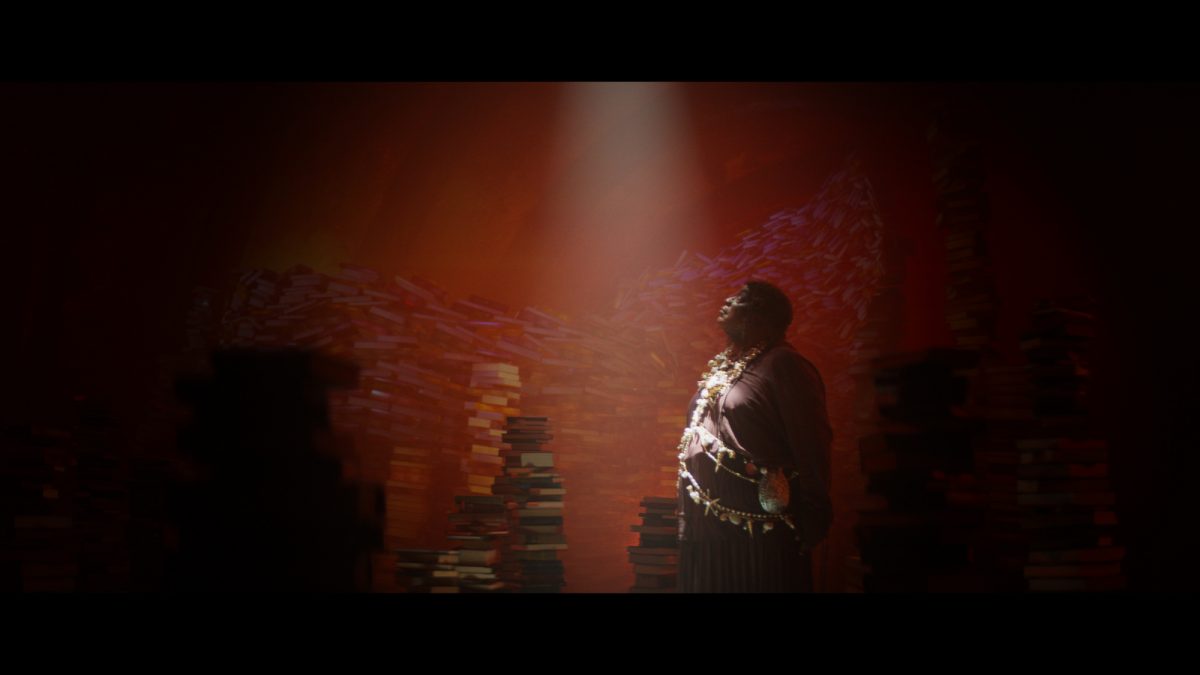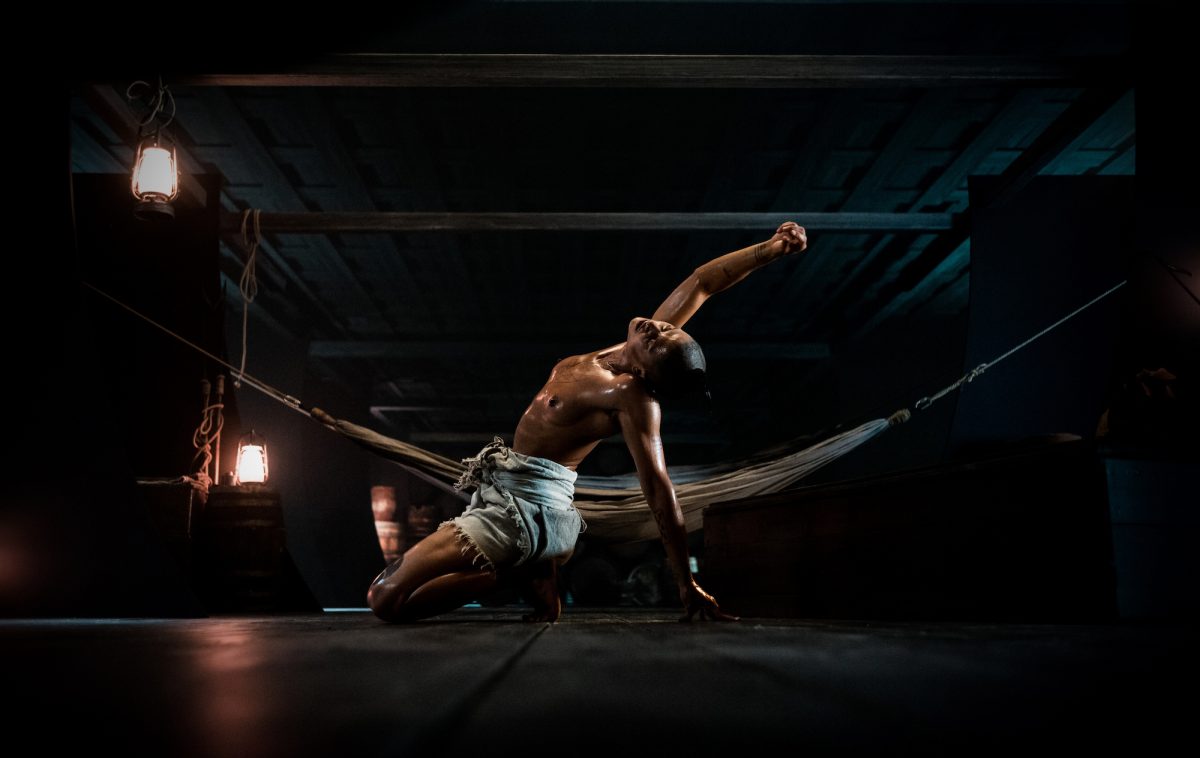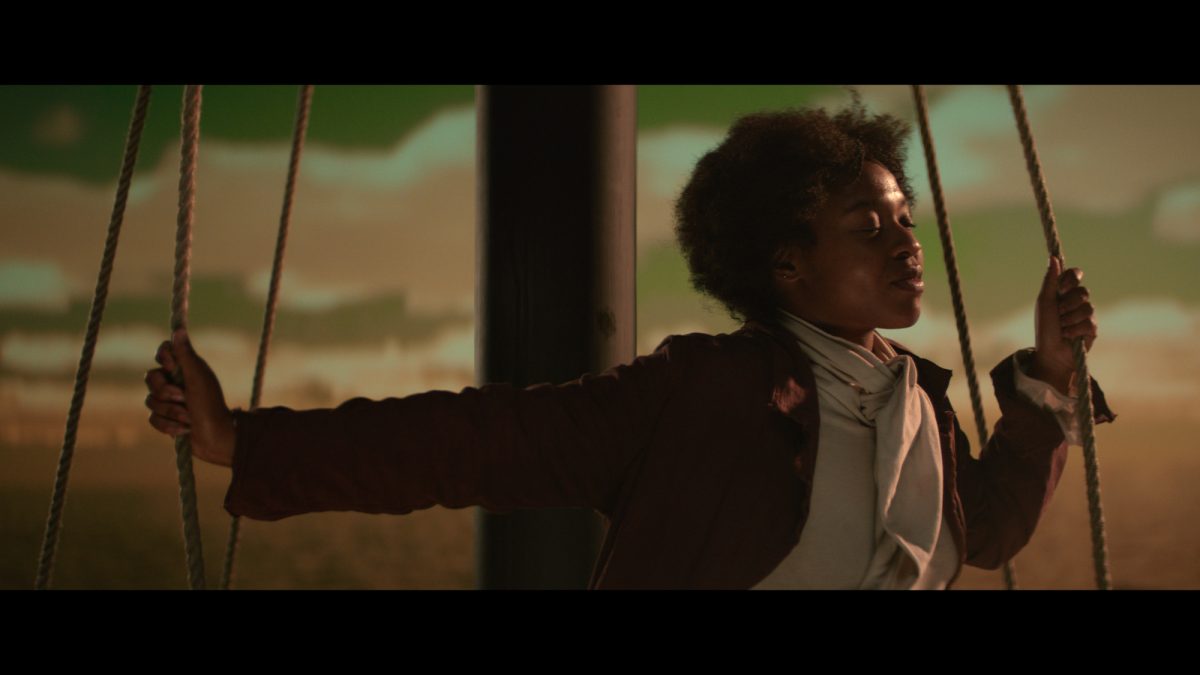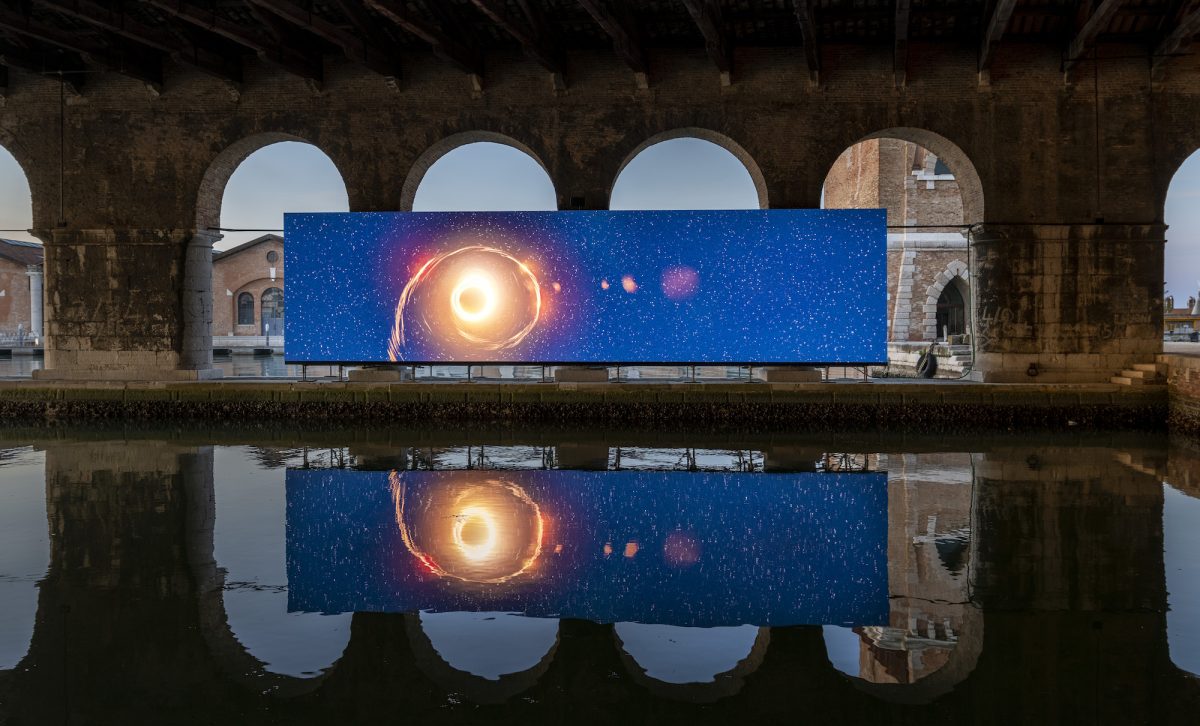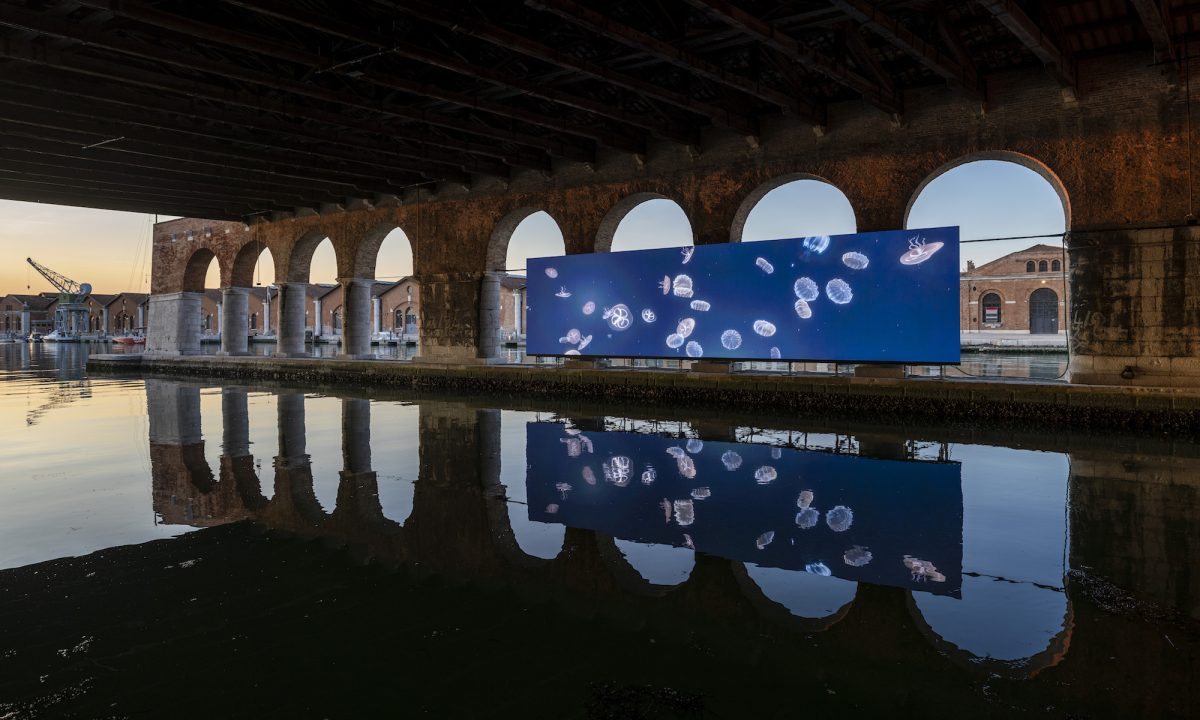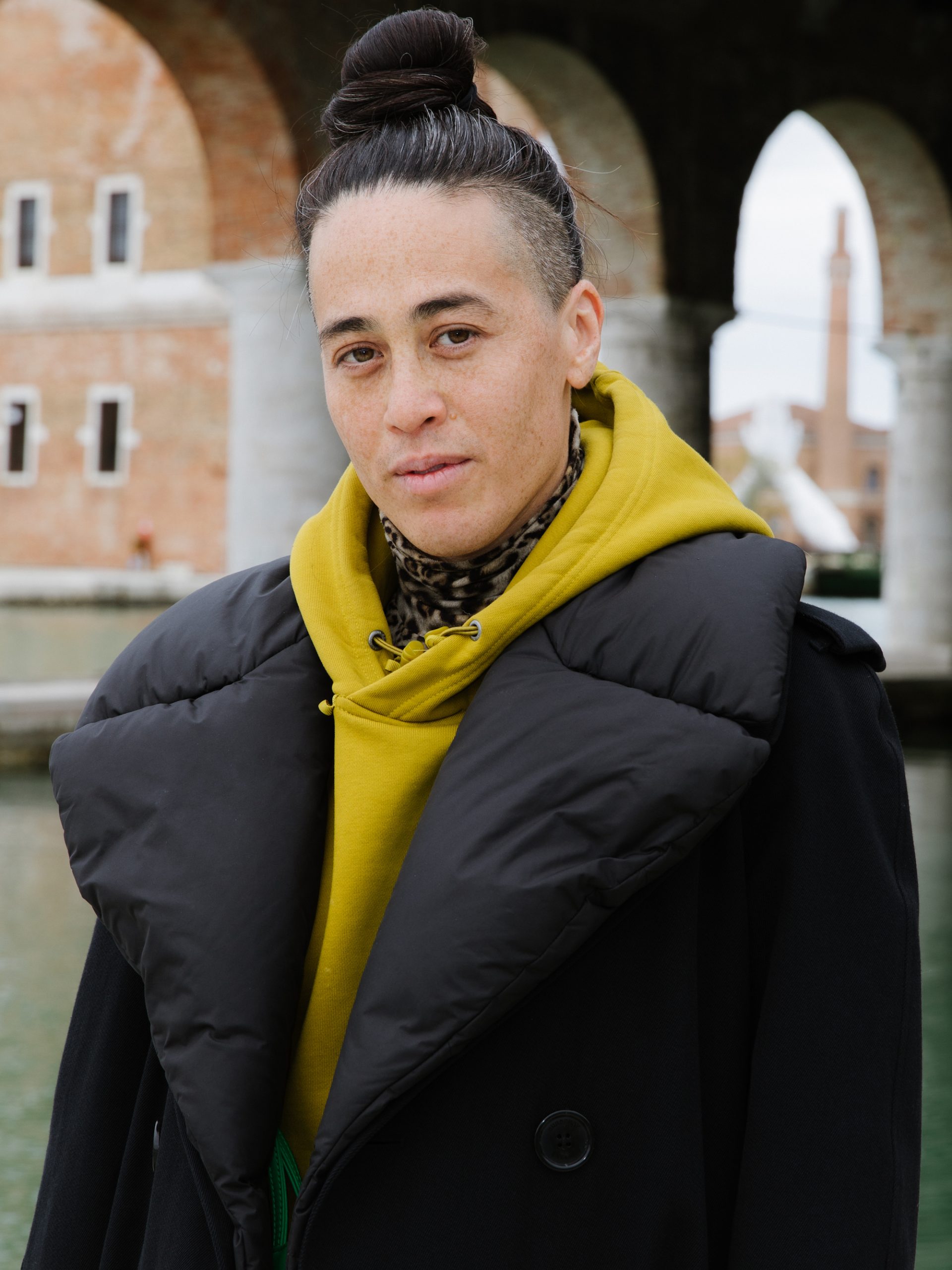
A smack of jellyfish drift slowly across a 16-metre LED. Every so often, a lone creature zooms into close-up and its form breaks into glitchy pixels before it drifts off again to rejoin the group. This is Of Whales
, a tranquil VR video work by Wu Tsang shown in the Giaggiandre, one of the quietest spots in the Arsenale, under vast brick canopies that stretch out into the sea with gently pulsing waves reflected onto their underbellies.
The jellyfish form part of Tsang’s VR-looped sperm whale deep dive, which takes in sun-splattered waves, moments of fellow sea-life swimming past, and more abstract forms that vibrate in time to a soothing soundtrack. Of Whales forms part of a body of work inspired by Herman Melville’s classic novel Moby Dick. At the opening week of the biennale, TBA21–Academy and The Hartwig Art Foundation presented at Teatro Goldoni the Italian premiere of Tsang’s stirring silent feature film Moby Dick; or, The Whale with a live score by the Zurich Chamber Orchestra. Of Whales offers a below-sea-level insight into the cetacean’s experience while Moby Dick; or, The Whale explores life onboard the ship.
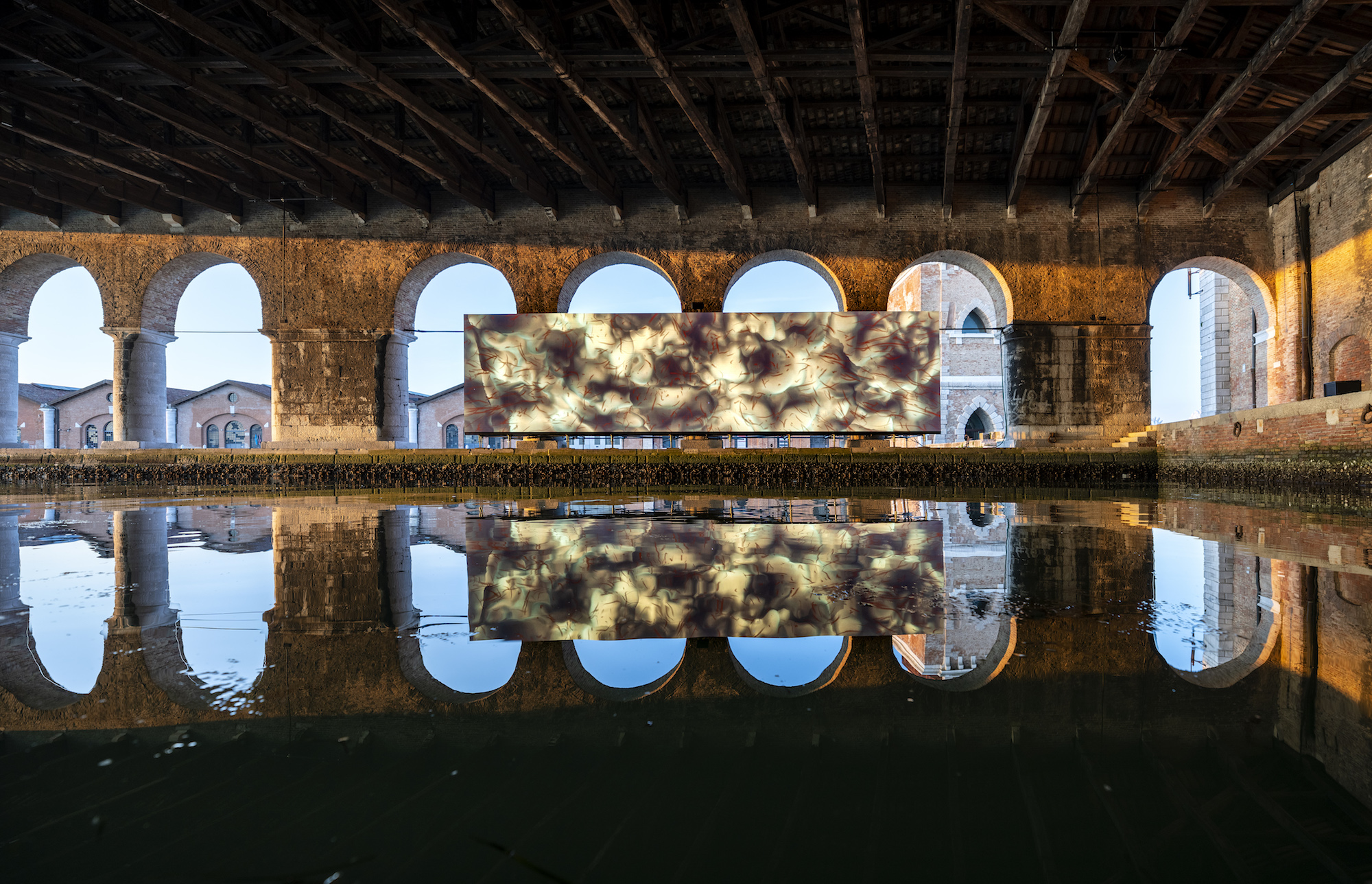
“I never read it when I was younger,” Tsang laughs, when asked about her first experience of the novel. “It’s definitely a book that they make you read in high school but somehow I missed it. I wasn’t the kind of person who would enjoy an American classic, just the idea of that really turned me off, mostly because that kind of book is not reflective of my experience or people like me, so I was suspicious, or uninterested.”
“The language was very surprising and clear and layered. It felt like it was alluding to so many things I was thinking about”
Tsang came to the story recently, through the work of historian and writer CLR James. His book Mariners, Renegades and Castaways was written in the 1950s after he was removed from Ellis Island and detained for six months by immigration officials. The book focuses on the work of Herman Melville, exploring the hierarchies present in his works (primarily Moby Dick
and Pierre) in parallel with the structures of capitalism and totalitarianism. Tsang heard passages from Moby Dick at a talk her friend Laura Harris was giving on James’ book.
“The way she was reading it made me suddenly so interested because the language was very surprising and clear and layered,” says Tsang. “It felt like it was alluding to so many things I was thinking about and the way she talked about it made me really excited. I started reading it and I was like ‘Wait, this is amazing’.”
Tsang developed the script for Moby Dick; or, The Whale with artist and writer Sophia Al-Maria, who only had access to relevant portions of the original book. The resulting work has some focus on the gradually declining sanity of captain Ahab, but it also centres those working on the ship, telling their narratives of love, hope, triumph and disaster. Each is introduced in poetic detail at the beginning of the film and could be seen as representing different archetypes.
“The work has some focus on the declining sanity of Ahab, but it also centres those working on the ship, telling their narratives of love, hope, triumph and disaster”
Tsang is known for telling stories of those who are othered or sidelined. In 2008, she started the community-driven clubnight Wildness in LA’s traditionally Asian and Latinx neighbourhood of MacArthur Park. She went on to create a 2012 film about the night, which included scenes from a legal services clinic set up by the artist to offer support to trans immigrants. In 2018 she produced Into a Space of Love for Frieze London, exploring the “queer, Brown and Black” roots of house music and its appropriation into mainstream white culture.

Moby Dick; or, The Whale (2022), Dir. Wu Tsang, Prod. Schauspielhaus Zürich. (Design Pics Inc / Alamy Stock Footage)
In Moby Dick; or, The Whale, the crew, portrayed by frequent collaborator Tosh Basco (formerly known as the performance artist boychild) and actors from Tsang’s directorial residency at Swiss theatre Schauspielhaus Zürich, are shown as part of a full ecosystem, each with their own drives and desires, rather than simply as players in Ahab’s game. The film veers from high drama to comedy and back again.
“It was really fun because theatre actors are really good at being big,” Tsang says. “For camera, it usually feels like overacting, but it’s great for a silent film because you need to be big.”
Another massive personality in the films is the whale itself. There is a striking difference between Of Whales, in which the animal goes about its daily business in a mostly calm fashion, and Moby Dick; or, The Whale, which touches on the historical viewing of leviathans as monstrous.
- Wu Tsang, Of Whales, 2022. Photo: Matteo De Fina. Supported by VIVE Arts
“In Melville’s book I think the whale is really mystical,” says Tsang. “It’s so many things. In adaptations of Moby Dick there are a lot of versions where the whale is totally a monster and we have a little bit of that in my film. There is a chapter in the film showing all the paintings and ways people have imagined whales before they had photography. The whale for me becomes this metaphor for the unknowable thing. It kind of eluded me in making Moby Dick. We ended up having a technical issue in the studio on the day it was meant to show up. We were using this VR ocean projection and the whale wasn’t integrated in the scene in the way it was supposed to. I was really frustrated but then I thought maybe it’s appropriate. The whale just can’t be captured.”
“It was kind of a joke for me to show the whale’s perspective. What would whale vision actually look like?”
For Of Whales Tsang worked with VR supported by VIVE Arts, a platform that provides cutting-edge technology to artists. In collaboration with Studio Albyon in France, she created an entire VR world for the whale to swim through, which enabled a more spontaneous directing experience than she is used to in film.
“It was kind of a joke for me to show the whale’s perspective,” she says. “What would whale vision actually look like? That’s an impossible thing to know and they primarily see and communicate with sound and sonar. That’s why I thought VR was the perfect tool or medium for this because it’s so limited. I think of it as a snow globe. You have to define the world: this is what gravity is; this is what wind is; this is how water moves. Of Whales is a computer with an ocean environment that is simulating jellyfish and storms and the camera just moves through it.”
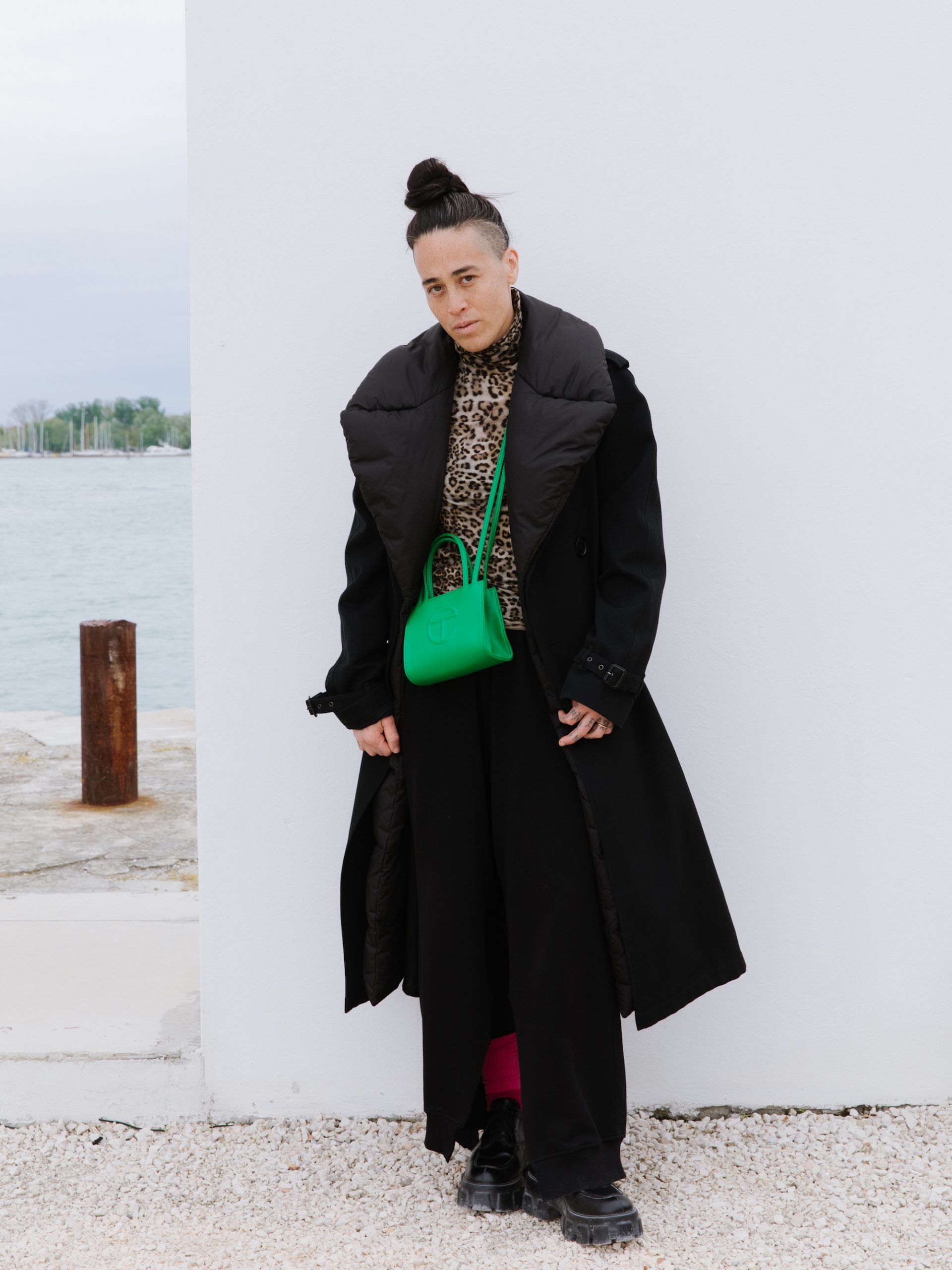
Tsang aligns the process more with live theatre directing than filmmaking. “You don’t control time and composition in the same way. It’s like, ‘OK: Jellyfish, go! And wind, blow!’ And it doesn’t work so you have to try it again. It’s a little bit of chaos that you’re trying to put into motion and it comes out differently each time.”
“You don’t control time and composition. It’s like, ‘OK: Jellyfish, go! And wind, blow!’ And it doesn’t work so you have to try again”
Of Whales is part of the 59th Venice Biennale’s main exhibition The Milk of Dreams, which has a central environmental focus and contains many human and animal hybrids. To achieve any meaningful form of survival, the show suggests, humans need to become more aligned with one another and the world around them. Seeing both of Tsang’s films in succession, the dramatised version of Ahab’s mission and the tranquil life of the whale underwater, it’s hard not to see it as an analogy of the crazed white man bringing everyone else down with his vision of the world.
“That is a reading for sure,” Tsang says. “In James’ book Ahab is kind of the dictator, or the boss, and the first mates are the managers and the sailors are the workers. So there is a class structure and a power structure and a hierarchy that’s represented. But actually, Sebastian Rudolph who played Ahab brought a lot of complexity to the role. You can empathise with his obsession in a way. But that’s also white power. There is a weird way in which you feel sorry for the person in the way they wield power, it’s kind of sad. Everybody to me plays a kind of role.”
Emily Steer is Elephant’s editor
Of Whales (2022), Wu Tsang, with support from VIVE Arts. VIA Art Fund, LUMA Foundation, ATLAS V, Albyon Studio. Courtesy the Artist, Galerie Isabella Bortolozzi, Berlin, Antenna Space, Shanghai, Cabinet, London
MOBY DICK; or, The Whale (2022) is produced by Schauspielhaus Zurich in collaboration with Zürcher Kammerorchester (ZKO). TBA21–Academy and Hartwig Art Foundationare are co-commissioning this work with LUMA Foundation, Superblue, DE SINGEL, The Shed, and The Whitney Museum of American Art

